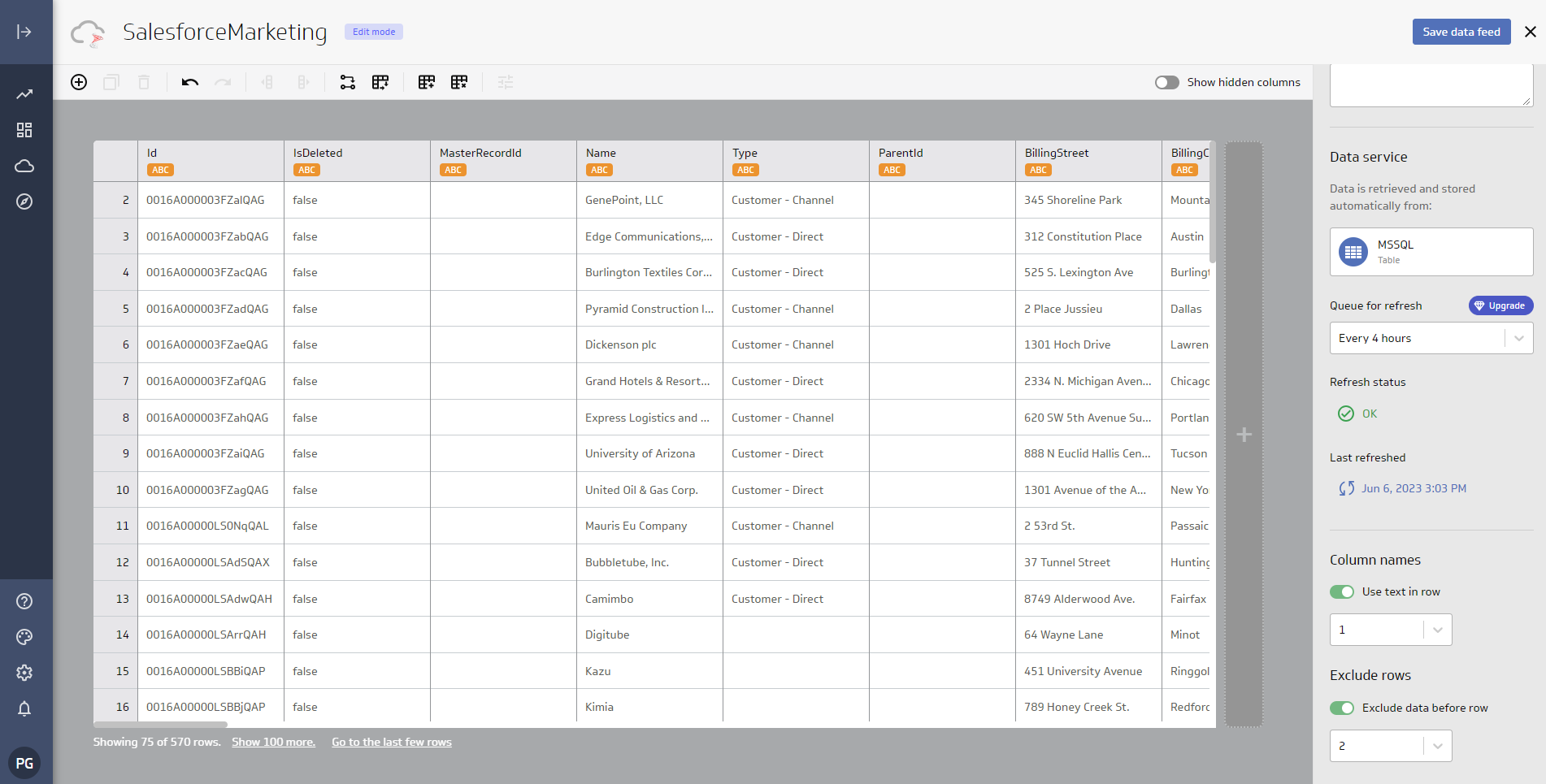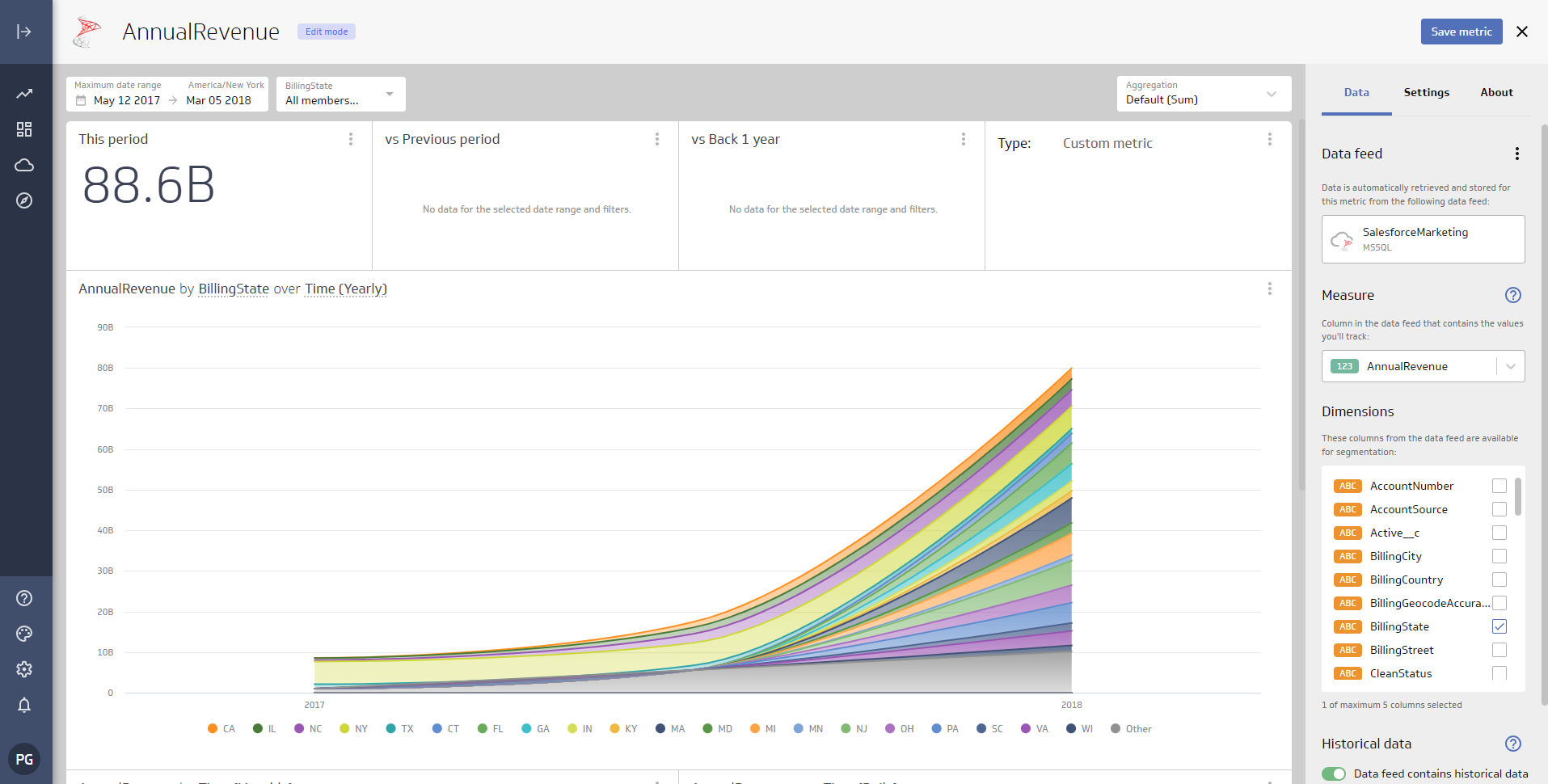Discover how a bimodal integration strategy can address the major data management challenges facing your organization today.
Get the Report →Create FTP-Connected Visualizations in Klipfolio
Use CData Connect Server to connect to FTP from Klipfolio and build custom visualizations using live FTP data.
Klipfolio is an online dashboard platform for building real-time business dashboards for your team or your clients. When paired with CData Connect Server, you get instant access to FTP data for visualizations, reports, and more. This article shows how to create a virtual database for FTP in Connect Server and build visualizations from FTP data in Klipfolio.
CData Connect Server provides a pure SQL Server interface for FTP, allowing you to easily build reports from live FTP data in Klipfolio — without replicating the data to a natively supported database. As you build visualizations, Klipfolio generates SQL queries to gather data. Using optimized data processing out of the box, CData Connect Server pushes all supported SQL operations (filters, JOINs, etc) directly to FTP, leveraging server-side processing to quickly return the requested FTP data.
Create a Virtual SQL Server Database for FTP Data
CData Connect Server uses a straightforward, point-and-click interface to connect to data sources and generate APIs.
-
Login to Connect Server and click Connections.
![Adding a connection]()
- Select "FTP" from Available Data Sources.
-
Enter the necessary authentication properties to connect to FTP.
To connect to FTP or SFTP servers, specify at least RemoteHost and FileProtocol. Specify the port with RemotePort.
Set User and Password to perform Basic authentication. Set SSHAuthMode to use SSH authentication. See the Getting Started section of the data provider help documentation for more information on authenticating via SSH.
Set SSLMode and SSLServerCert to secure connections with SSL.
The data provider lists the tables based on the available folders in your FTP server. Set the following connection properties to control the relational view of the file system:
- RemotePath: Set this to the current working directory.
- TableDepth: Set this to control the depth of folders to list as views.
- FileRetrievalDepth: Set this to retrieve and list files recursively from the root table.
Stored Procedures are available to download files, upload files, and send protocol commands. See the Data Model chapter of the FTP data provider documentation for more information.
![Configuring a connection (SQL Server is shown).]()
- Click Save Changes
- Click Privileges -> Add and add the new user (or an existing user) with the appropriate permissions.
With the virtual database created, you are ready to connect to FTP data from Klipfolio.
Connect to FTP in Klipfolio
The steps below outline connecting to CData Connect Server from Klipfolio to create a new FTP data source.
- Open Klipfolio
- Click in Data Feeds on the left panel to add a new data source.
- Search for and select MS SQL as the Service.
![Adding a new datasource.]()
- Click "Create a custom MSSQL data source"
- Configure the data source by setting the SQL Server connection properties:
- Host: your instance (e.g., CONNECT_SERVER_URL)
- Port: 1433
- Database: your database (e.g., FTP1)
- Driver: MS SQL
- Username: your Connect Server username
- Password: your Connect Server password
- SQL Query: any query to retrieve data (e.g., SELECT * FROM MyDirectory)
- Select the checkbox to "Include column headers"
![Configuring the connection to Connect Server.]()
- Click "Get data" to preview the FTP data before building a data model.
Build a Data Model
After retrieving the data, click "Continue." In the new window, configure your data model.
- Confirm that the model includes all columns you wish to work with
- Name your model
- (optional) Set the Description
- Set "Header in row" to 1
- Click the toggle to "Exclude data before row" and set the value to 2
- Click "Save data feed"
![Configuring the data model.]()
Create a Klip
With the data modeled, we are ready to create a Klip (or visualization) of the data to be used in the Klipfolio platform for dashboards, reporting, and more.
- Click "Add Metric"
- Select a measure, placed on the y-axis, to track.
- Select up to five dimensions/columns, for the x-axis, that you wish to visualize.
![Setting the Series.]()
- Click "Save metric"
SQL Access to FTP Data from Applications
Now you have a Klip built from live FTP data. You can add it to a new dashboard, share, and more. Easily create more data sources and new visualizations, produce reports, and more — all without replicating FTP data.
To get SQL data access to 200+ SaaS, Big Data, and NoSQL sources directly from your applications, try CData Connect Server.












